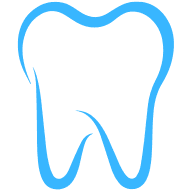4 Emerging Dentistry Trends With Significant Potential
The landscape of dentistry is on the brink of a revolution, as artificial intelligence (AI) begins to redefine what's possible in patient care and treatment efficiency. This article delves into the latest AI-driven trends that are set to transform the dental industry, backed by the perspectives of leading experts in the field. Discover how these technological advancements can enhance diagnosis, improve early detection, and streamline dental practice management.
- AI Enhances Dental Diagnosis and Treatment
- AI Improves Early Detection and Proactive Care
- AI Transforms Dental Diagnostics and Management
- AI Revolutionizes Dental Care and Efficiency
AI Enhances Dental Diagnosis and Treatment
One emerging trend in dentistry that I'm looking forward to is the use of machine learning, often referred to by laypeople as artificial intelligence (AI). AI has the potential to save time for dental professionals, assist in confirmation of diagnosis, detect potential issues earlier, plan incremental tooth movements in clear aligner therapy, personalize treatment plans by analyzing genetic markers, and many other areas yet to be explored.
One useful example will be in oral cancer detection. Oral cancer today has a high morbidity and mortality. However, oral cancer, when detected early, is treatable and in most cases can be managed without significantly impacting the lives of those affected. Unfortunately, oral cancer detection rates have not markedly improved over the years, meaning that by the time oral cancers are detected, their treatment requires aggressive intervention. Since oral cancers are located adjacent to many other important anatomical structures, their treatment means significant life changes to patients, including facial disfigurement, a reduced ability to eat, speak, and swallow, reduced salivary flow, and nerve damage. Early detection can make a world of difference for patients, both in their survival and quality of life. An AI-based detection system that is quick, inexpensive, and easily incorporated into routine oral examinations could be promising.
For orthodontists, this technology has a bright future. It can enhance our ability to provide patients with the most comprehensive and timely care. However, there may still be challenges, such as the need for specialized tools and additional time for screenings, which could strain dental practices already operating on tight schedules and budgets. But with the potential of AI, we anticipate increased efficiency and lower cost, which means more widespread adoption by clinicians, leading to improvements in the lives of more patients.

AI Improves Early Detection and Proactive Care
One trend in dentistry that I'm particularly excited about is the growing role of artificial intelligence (AI) in diagnostics and treatment planning. As a prosthodontist, I've seen how AI-driven tools, especially in radiology, are improving the accuracy and efficiency of diagnoses. These tools can analyze X-rays and 3D scans to detect issues like early-stage cavities, gum disease, or even oral cancer that might not be immediately visible.
What makes AI so exciting is its ability to identify problems at a much earlier stage, allowing for more proactive care. This means I can offer patients treatment options that are less invasive and more effective. I believe as these technologies continue to develop, they will significantly enhance how we approach diagnosis and treatment, ultimately leading to better outcomes and a more personalized patient experience.
AI Transforms Dental Diagnostics and Management
The rise of artificial intelligence (AI) in dentistry is an emerging trend that I'm particularly excited about. AI-powered diagnostic tools are transforming how dentists detect and treat oral health issues. For example, machine learning algorithms can analyze X-rays and scans with incredible precision, spotting early signs of cavities, gum disease, or even oral cancers that might be missed by the human eye. This technology not only enhances accuracy but also empowers dentists to create highly personalized treatment plans. Patients benefit from earlier interventions, which can mean less invasive procedures and better outcomes. Beyond diagnostics, AI is streamlining practice management by optimizing scheduling, improving patient communication, and predicting trends in patient needs. As this technology continues to evolve, I believe it will make dental care more efficient, accessible, and preventive-focused, ultimately improving oral health outcomes on a global scale.

AI Revolutionizes Dental Care and Efficiency
Artificial Intelligence (AI) in diagnostics and treatment planning. This innovation has the potential to transform oral healthcare by enhancing diagnostic precision, streamlining workflows, and enabling more personalized patient care. AI-powered tools can analyze dental X-rays, CT scans, and intraoral images with remarkable accuracy, identifying issues such as cavities, periodontal disease, and even early-stage oral cancers. By detecting these problems earlier and more reliably, AI can lead to interventions that preserve oral health and prevent complications, significantly improving patient outcomes. Moreover, AI enables the creation of highly personalized treatment plans. By analyzing a patient's medical history, genetic predispositions, and lifestyle factors, AI systems can recommend tailored approaches to care. This personalized focus not only enhances the effectiveness of treatments but also improves patient satisfaction by addressing individual needs more precisely. For example, AI is already making strides in orthodontics, where it helps design clear aligners that fit perfectly and predict treatment outcomes with greater accuracy. Another promising application of AI is in improving efficiency within dental practices. Tasks such as charting, appointment scheduling, and even insurance claim processing can be automated, freeing up time for dentists to focus more on direct patient care. In prosthodontics, AI-assisted technologies are speeding up processes like designing crowns and bridges, reducing the time patients wait for restorative solutions. Combined with advances in teledentistry, AI is also expanding access to care, allowing dentists to provide virtual consultations and remote monitoring to patients in underserved areas.



